1968 LAMBORGHINI P400 MIURA GT BERLINETTA Registration No. Q464 DPG Chassis No. P400XN1613435 Engine No. 1827 Red with black leather and cloth interior. Engine: transverse rear-mounted four overhead-camshaft vee-twelve with four valves per cylinder, six twin-choke Weber carburettors, 3929cc, 350/400bhp at 7000rpm; Clutch: dry plate; Gearbox: five-speed manual with synchromesh; Differential: limited-slip; Steering: rack and pinion; Suspension: independent front and rear by double wishbones with vertical coil springs, roll-bars front and rear. Left-hand drive. When it appeared as a prototype late in 1965, Lamborghini's P400 Miura coupe was the first 12-cylindered production mid-engined sports car. It redefined both specification and form in the ultimate high-performance road car and was a major sensation at that year's Turin show. The fabulous 350bhp four-camshaft vee-twelve powerplant was installed transversely immediately behind the two occupants in a rigid sheet steel chassis and matched by racing-style suspension. It was murmured that there was an 180mph maximum. Clad by one of the most elegantly aggressive Berlinetta bodies ever to emerge from the workshops of the brilliant Nuccio Bertone, the Miura brought contemporary Formula One design to the autostrada. For taurean Ferruccio Lamborghini, self-made tractor tycoon turned exotic car maker, the Miura, named for a famous strain of fighting bulls, was the culmination of his determination to drive Automobili Ferruccio Lamborghini forward until it became Italy's most famous high performance automobile manufacturer. There were to be other wondrous supercars from the marque he founded, most notably the Countach coupe, but it was the Miura which first confidently announced the arrival of this important new force. At the heart of the car was the immensely strong Vee-12 powerplant, already seen in the earlier front engined Lamborghini 350 and 400 GT models. It was the work of the young Gianpaolo Dallara, who had trained as an aeronautical engineer. With its twin overhead camshafts to each bank of cylinders, it was clearly intended to outdo Ferrari. It proved to be a long-lasting and reliable unit. To enable the engine's formidable output to be unleashed with confidence, there was a worthy semi-unitary chassis to provide a secure base for the twin wishbone full independent suspension to operate as intended. Road-testers were impressed by its cornering power and 'huge' disc brakes. Whether it was designed by Carrozeria Bertone's Gardini, or the rising young star Giugiaro, has long been argued over, but there can be no doubt that the body was at once aerodynamic and sensationally original. The 'eyelashed' headlights which retract to point skyward were just one of the Miura's notable details; the ease with which the passenger might observe, through a vertical rear window, the engine at work just behind his shoulders was another. Never a man to resist a publicity opportunity, Lamborghini permitted a development engineer to take an early specimen to Monaco during the 1966 Grand Prix weekend. Parked alongside other automotive exotica outside the Casino on the night before the race, the Miura upstaged all of them. It went into production during the following year; only 500 were built before it was superseded by the Miura SV variant. Although early reports confidently spoke of 180-plus available with early factory cars (the speedometer was calibrated to 200mph) in production form the P400 Miura's maximum was realistically no more than 170mph, with a standing quarter-mile covered in 14.5 secs by Road & Track during a test of the Western American importer's own example. Despite its exotic appearance, the coupe was quite a practical car. Front and rear sections pivot upwards to lay bare the mechanism. The transverse engine installation leaves space for a useful luggage locker at the very rear. A simple heating and ventilation system was provided. The cabin is well-furnished and instrument
1968 LAMBORGHINI P400 MIURA GT BERLINETTA Registration No. Q464 DPG Chassis No. P400XN1613435 Engine No. 1827 Red with black leather and cloth interior. Engine: transverse rear-mounted four overhead-camshaft vee-twelve with four valves per cylinder, six twin-choke Weber carburettors, 3929cc, 350/400bhp at 7000rpm; Clutch: dry plate; Gearbox: five-speed manual with synchromesh; Differential: limited-slip; Steering: rack and pinion; Suspension: independent front and rear by double wishbones with vertical coil springs, roll-bars front and rear. Left-hand drive. When it appeared as a prototype late in 1965, Lamborghini's P400 Miura coupe was the first 12-cylindered production mid-engined sports car. It redefined both specification and form in the ultimate high-performance road car and was a major sensation at that year's Turin show. The fabulous 350bhp four-camshaft vee-twelve powerplant was installed transversely immediately behind the two occupants in a rigid sheet steel chassis and matched by racing-style suspension. It was murmured that there was an 180mph maximum. Clad by one of the most elegantly aggressive Berlinetta bodies ever to emerge from the workshops of the brilliant Nuccio Bertone, the Miura brought contemporary Formula One design to the autostrada. For taurean Ferruccio Lamborghini, self-made tractor tycoon turned exotic car maker, the Miura, named for a famous strain of fighting bulls, was the culmination of his determination to drive Automobili Ferruccio Lamborghini forward until it became Italy's most famous high performance automobile manufacturer. There were to be other wondrous supercars from the marque he founded, most notably the Countach coupe, but it was the Miura which first confidently announced the arrival of this important new force. At the heart of the car was the immensely strong Vee-12 powerplant, already seen in the earlier front engined Lamborghini 350 and 400 GT models. It was the work of the young Gianpaolo Dallara, who had trained as an aeronautical engineer. With its twin overhead camshafts to each bank of cylinders, it was clearly intended to outdo Ferrari. It proved to be a long-lasting and reliable unit. To enable the engine's formidable output to be unleashed with confidence, there was a worthy semi-unitary chassis to provide a secure base for the twin wishbone full independent suspension to operate as intended. Road-testers were impressed by its cornering power and 'huge' disc brakes. Whether it was designed by Carrozeria Bertone's Gardini, or the rising young star Giugiaro, has long been argued over, but there can be no doubt that the body was at once aerodynamic and sensationally original. The 'eyelashed' headlights which retract to point skyward were just one of the Miura's notable details; the ease with which the passenger might observe, through a vertical rear window, the engine at work just behind his shoulders was another. Never a man to resist a publicity opportunity, Lamborghini permitted a development engineer to take an early specimen to Monaco during the 1966 Grand Prix weekend. Parked alongside other automotive exotica outside the Casino on the night before the race, the Miura upstaged all of them. It went into production during the following year; only 500 were built before it was superseded by the Miura SV variant. Although early reports confidently spoke of 180-plus available with early factory cars (the speedometer was calibrated to 200mph) in production form the P400 Miura's maximum was realistically no more than 170mph, with a standing quarter-mile covered in 14.5 secs by Road & Track during a test of the Western American importer's own example. Despite its exotic appearance, the coupe was quite a practical car. Front and rear sections pivot upwards to lay bare the mechanism. The transverse engine installation leaves space for a useful luggage locker at the very rear. A simple heating and ventilation system was provided. The cabin is well-furnished and instrument







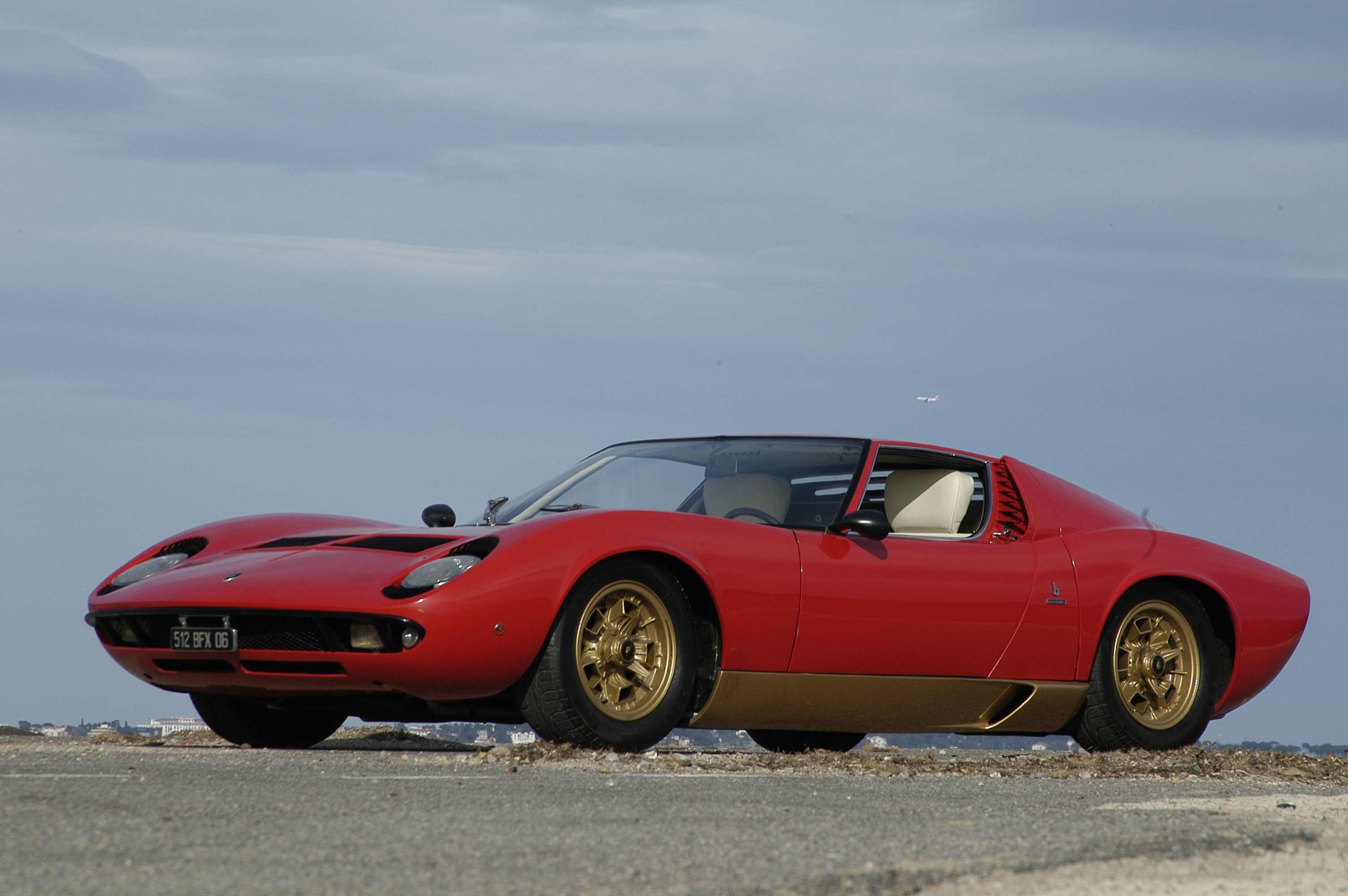

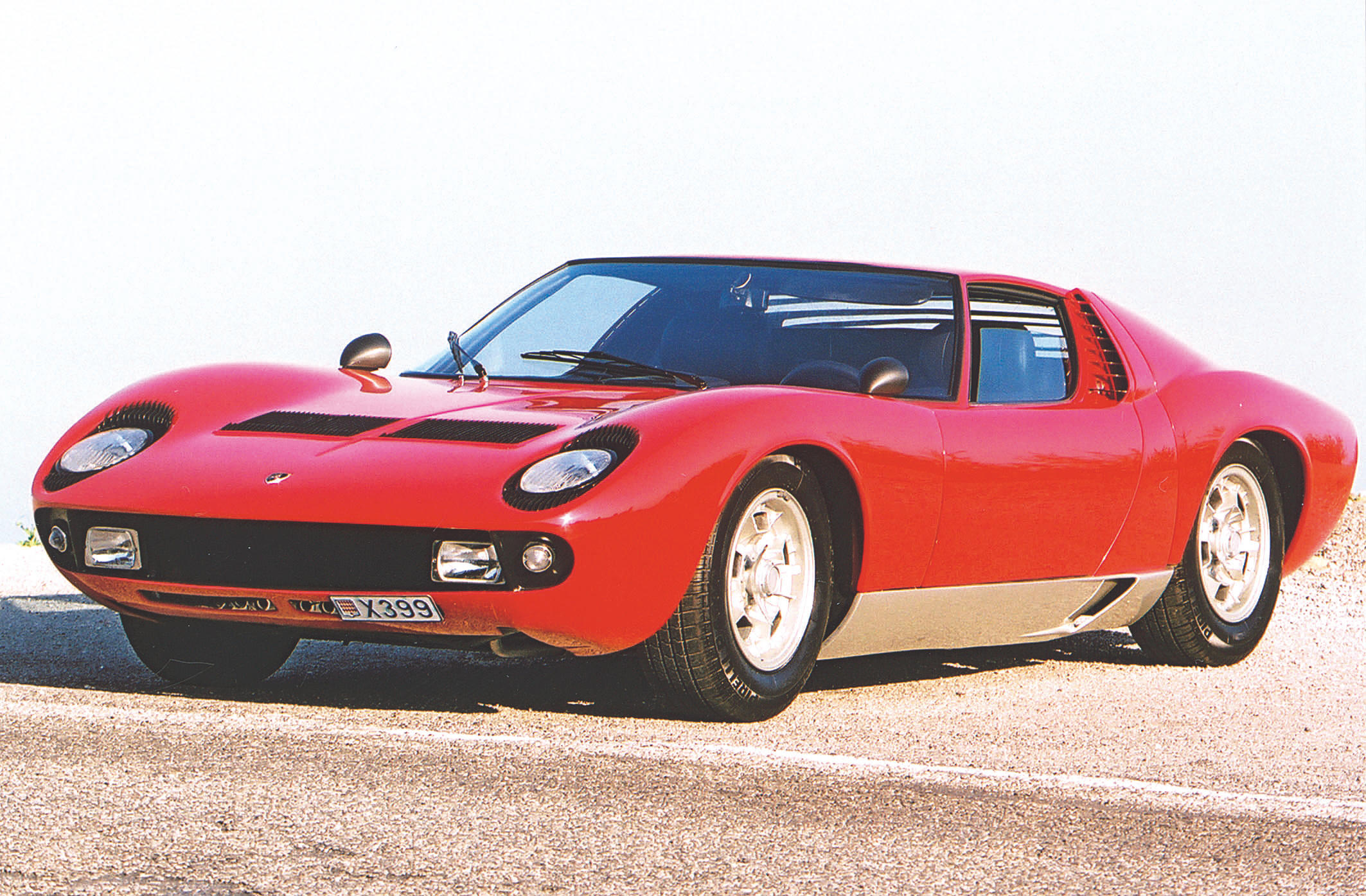
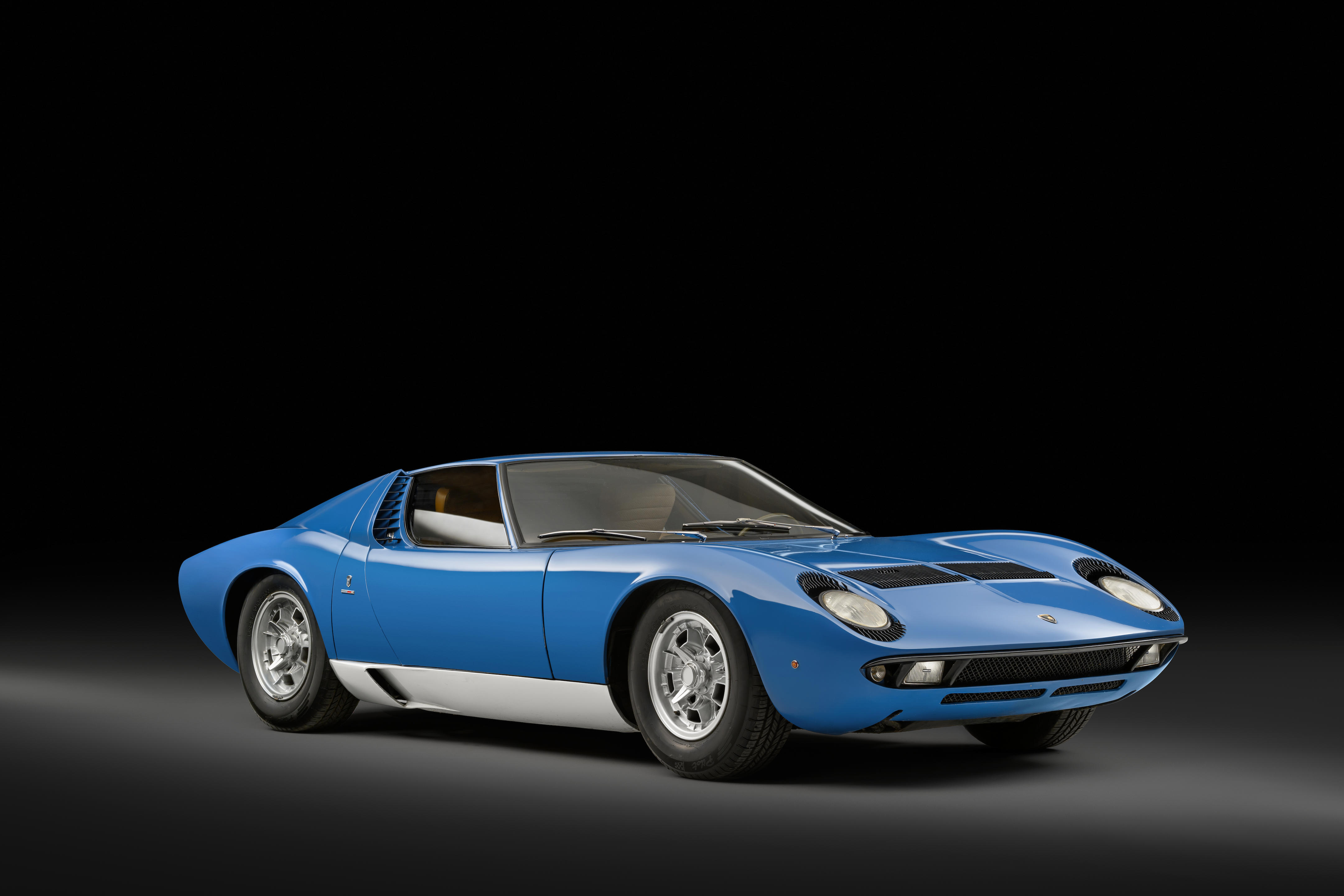

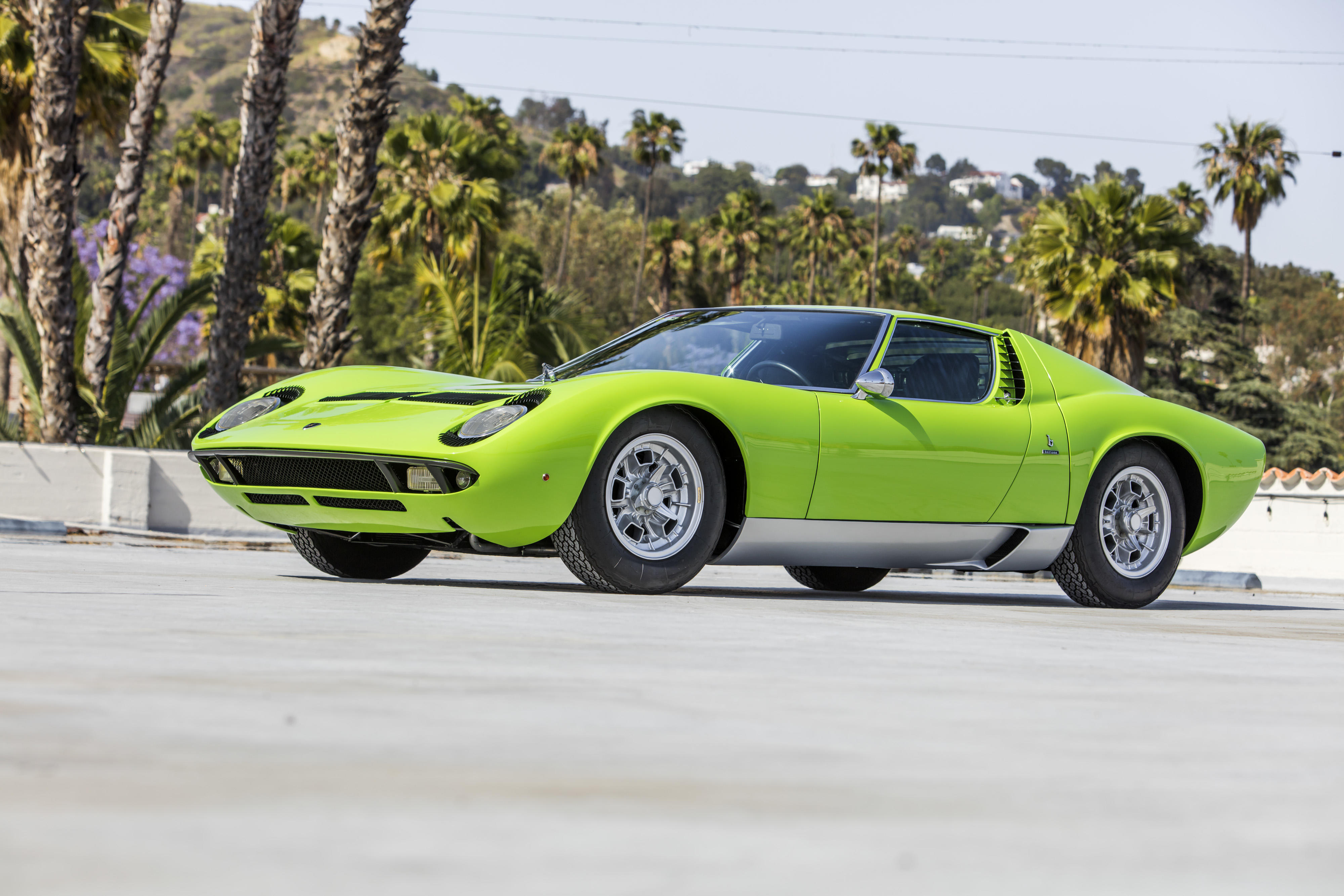
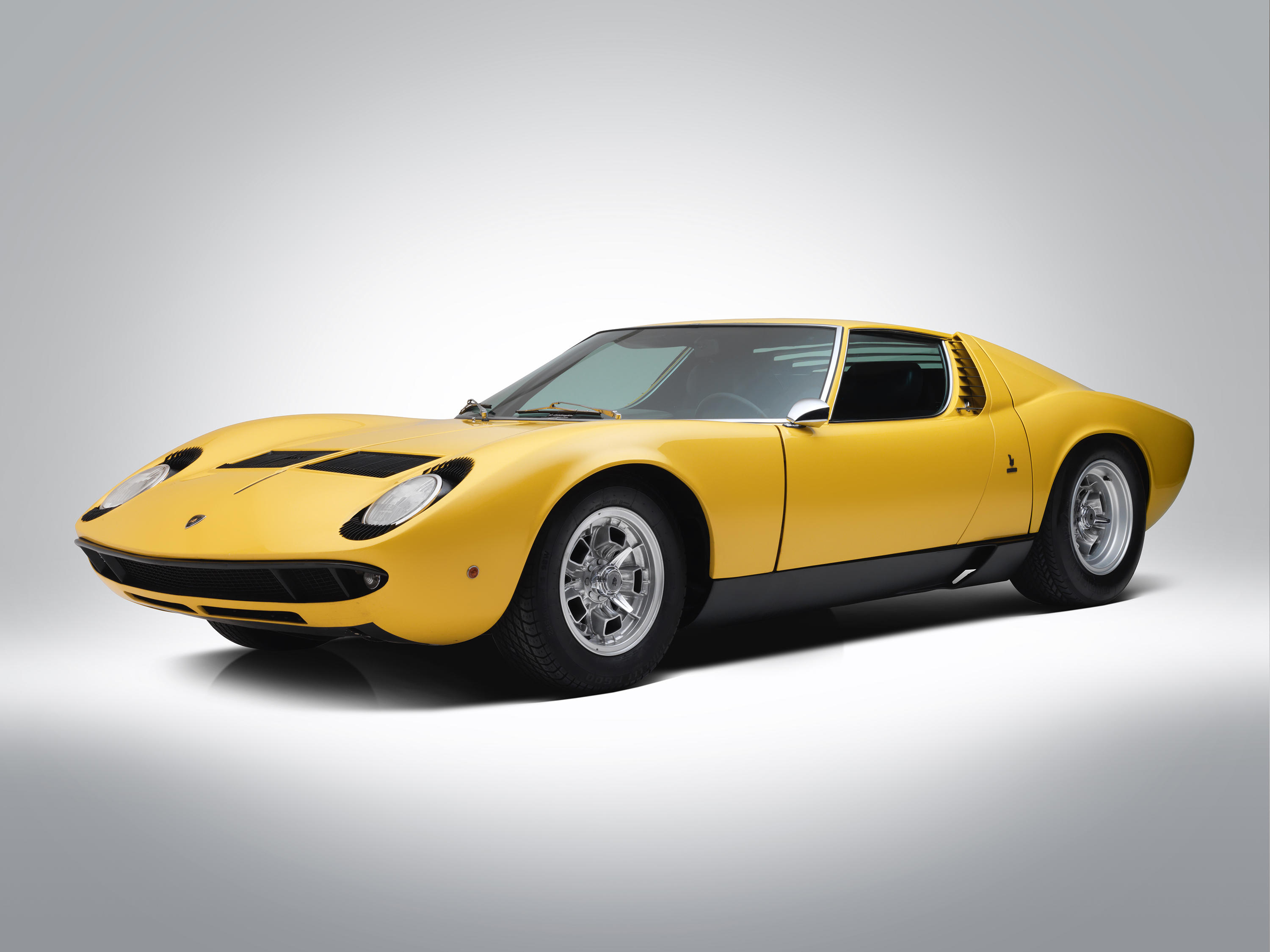

Testen Sie LotSearch und seine Premium-Features 7 Tage - ohne Kosten!
Lassen Sie sich automatisch über neue Objekte in kommenden Auktionen benachrichtigen.
Suchauftrag anlegen